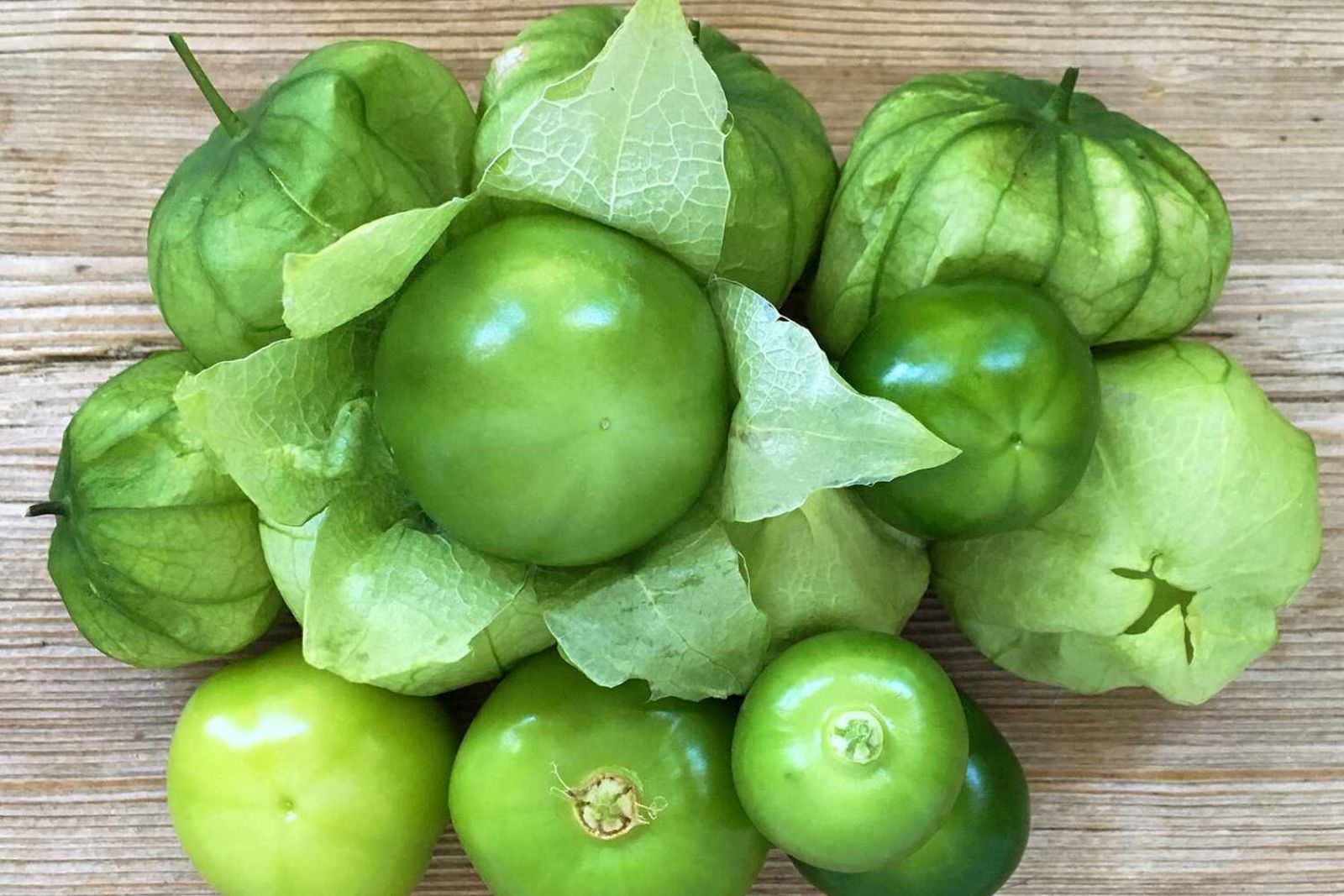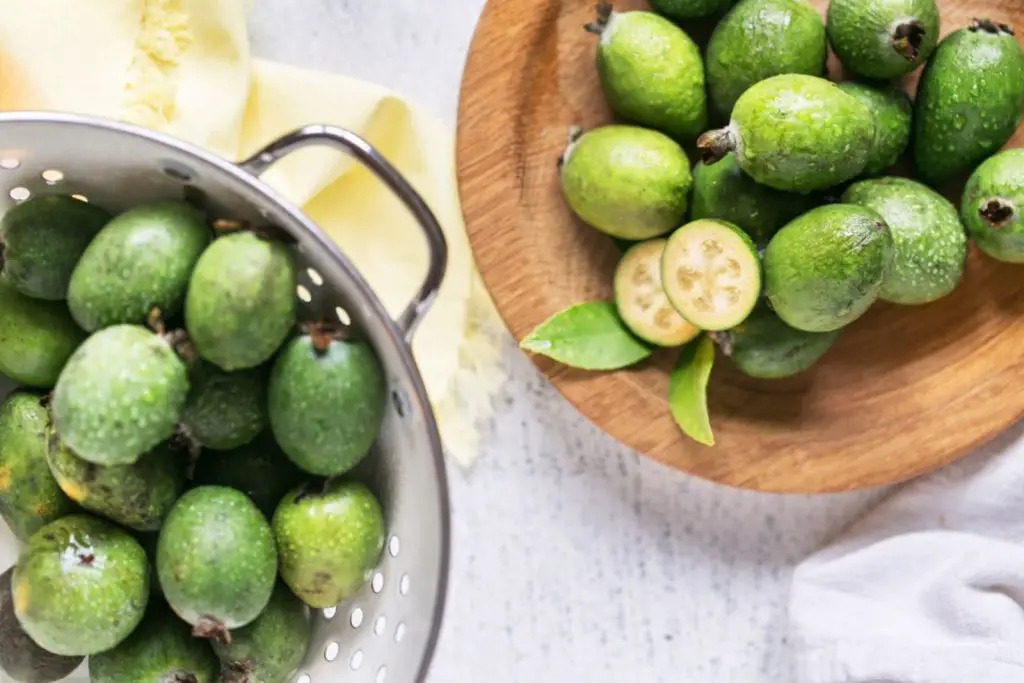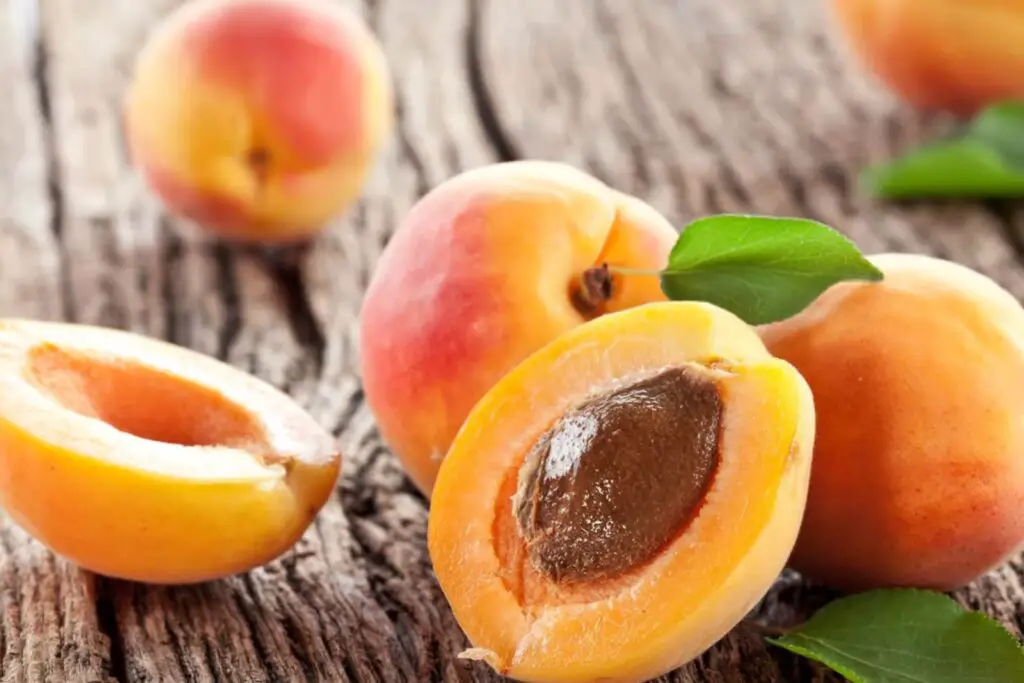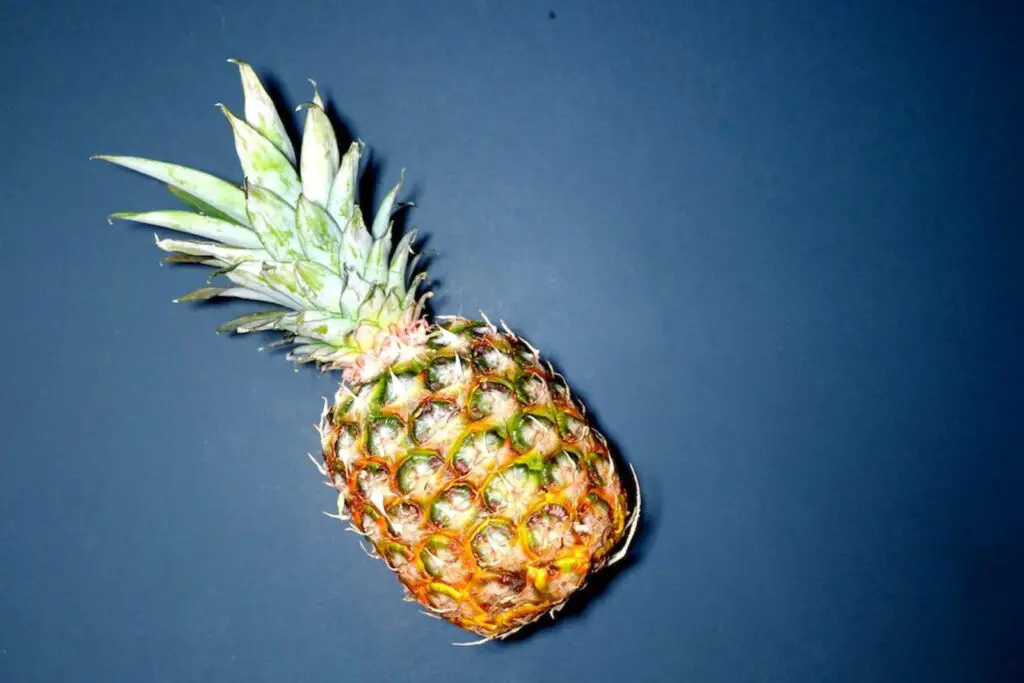
Tomatillos, the small green fruits encased in papery husks, are a staple ingredient in Mexican and Latin American cuisine. With their tangy and slightly citrusy flavor, tomatillos add a unique twist to salsas, sauces, and various dishes. Whether you grow them in your garden or find them at the market, freezing tomatillos can be an excellent way to preserve their freshness and enjoy their vibrant taste throughout the year.
Freezing tomatillos not only extends their shelf life but also allows you to have this versatile ingredient readily available for all your culinary creations. In this guide, we will explore the best methods for freezing tomatillos, ensuring that you can enjoy their zesty flavor and enhance your dishes with the distinctive taste of these delightful green gems.
Here are some simple steps to freeze tomatillos:
Step 1: Select ripe and firm tomatillos
Choosing the right tomatillos is crucial when it comes to freezing them. Opting for tomatillos that are fully ripe and firm will ensure that they maintain their quality and taste after being frozen. Here’s why it’s important:
- Quality preservation: Ripe tomatillos are at their peak flavor and have the best texture. Freezing them while they are at their best ensures that they retain their delicious taste and vibrant color when thawed later.
- Texture retention: Firm tomatillos freeze better than those that are overly ripe or soft. They are less likely to become mushy or lose their shape during the freezing process. By selecting firm tomatillos, you can enjoy their desirable texture even after they have been thawed.
- Visual appeal: Vibrant green tomatillos not only taste great but also add an attractive element to your dishes. When freezing tomatillos, choosing ones with a vibrant color will help maintain their visual appeal even after they have been stored in the freezer.
- Avoid decay and blemishes: It’s essential to examine the tomatillos closely and avoid any that show signs of decay, mold, or blemishes. Freezing damaged or spoiled tomatillos will not improve their quality, and they may affect the flavor and texture of other tomatillos in the same batch.
Step 2: Wash and remove husks
To prepare tomatillos for freezing, begin by washing them thoroughly under cool running water. This crucial step helps eliminate any dirt or debris that may cling to their outer surface. Take care to ensure each tomatillo is properly cleaned by gently rubbing it with your fingers or a soft brush.
After washing, it is important to remove the husks. Tomatillos are encased in a papery husk, similar to a cape, that protects the fruit. Start by peeling back the husk from the stem end of the tomatillo. Gently grasp the husk and peel it away, exposing the bright green fruit underneath.
Discard any husks that appear damaged, moldy, or spoiled, as they can negatively affect the flavor and quality of the tomatillos. It is crucial to select only healthy and intact husks for freezing. This initial preparation sets the stage for successfully preserving their vibrant flavor and texture.
Can I freeze tomatillos with the husks on?
Yes, you can freeze tomatillos with the husks on, but it’s recommended to remove the husks before freezing for better results. The husks can become tough and leathery when frozen, impacting the texture of the tomatillos. Removing the husks before freezing ensures consistent quality and easier preparation when you’re ready to use them.
Step 3: Blanch the tomatillos
Blanching is a crucial step in the process of freezing tomatillos as it helps preserve their flavor, texture, and vibrant green color. To blanch tomatillos, you will need a pot of boiling water and an ice bath. Start by bringing a pot of water to a rolling boil. While the water is heating, prepare a separate bowl or basin filled with ice and cold water to create an ice bath.
Carefully drop the tomatillos into the boiling water and let them blanch for approximately one minute. Blanching softens the tomatillos slightly and helps inactivate enzymes that can cause loss of flavor and texture during freezing.
After one minute, quickly remove the tomatillos from the boiling water using a slotted spoon or tongs and transfer them immediately into the ice bath. The ice bath rapidly cools down the tomatillos and halts the cooking process, preserving their fresh taste, vibrant color, and firm texture. This simple process helps to lock in their unique flavor and texture, allowing you to enjoy the vibrant taste of tomatillos even after they have been frozen.
Can I freeze the tomatillos without blanching them?
Yes, you can freeze tomatillos without blanching them. While blanching can help preserve the color and texture of certain vegetables, it is not necessary for freezing tomatillos. Simply remove the husks, rinse the tomatillos, and pat them dry. Freezing tomatillos without blanching may result in a slightly softer texture, but they will still be suitable for use in cooked dishes like salsas, sauces, or stews.
Step 4: Drain and dry
This step ensures that the tomatillos freeze evenly and prevent the formation of ice crystals that can affect their texture. Carefully remove the tomatillos from the ice bath and place them in a colander. Allow them to drain for a few minutes, gently shaking the colander to encourage water to escape.
To further eliminate moisture, gently pat the tomatillos dry using a paper towel or a clean kitchen towel. Lightly press the towel against each tomatillo, absorbing any remaining water. Drying the tomatillos helps prevent ice formation during freezing, maintaining their texture and quality. Excess moisture can lead to freezer burn and affect the taste and consistency of the tomatillos when thawed.
Once drained and dried, the tomatillos are ready for packaging. Whether you choose to freeze them whole or chop them into desired sizes, this step ensures that they are properly prepared for long-term storage or immediate use in a variety of culinary applications.
Step 5: Arrange on a baking sheet
To prepare the blanched and dried tomatillos for freezing, it is important to arrange them in a single layer on a baking sheet. This step helps prevent the tomatillos from sticking together during freezing and allows for easy handling and portioning.
Take a clean and dry baking sheet, ensuring it has enough space to accommodate the tomatillos without overcrowding. Place the blanched and dried tomatillos on the baking sheet, making sure they are not touching each other. This arrangement ensures that each tomatillo freezes individually and maintains its distinct shape.
By arranging the tomatillos in a single layer, you promote proper airflow around each fruit, facilitating efficient freezing and preventing them from clumping together. This allows for easy retrieval of the desired quantity when needed, without having to thaw the entire batch. If you have a large quantity of tomatillos, you may need to use multiple baking sheets or freeze them in separate batches to maintain the single layer arrangement.
Step 6: Flash freeze
After arranging the blanched and dried tomatillos in a single layer on a baking sheet, the next step is to flash freeze them. Flash freezing involves placing the baking sheet with the tomatillos in the freezer and letting them freeze for approximately two to three hours, or until they become firm to the touch.
Flash freezing is a crucial step in the freezing process as it individually freezes each tomatillo, preventing them from sticking together and allowing for easy portioning. The quick freezing process helps preserve the texture, flavor, and nutritional value of the tomatillos.
Freezing the tomatillos individually, it becomes effortless to remove the desired amount when needed. This prevents the need to thaw the entire batch and allows for convenient access to the desired quantity for various recipes.After the tomatillos have become firm, you can transfer them from the baking sheet to airtight containers, freezer bags, or vacuum-sealed pouches for long-term storage.
Step 7: Transfer to airtight containers
After flash freezing the tomatillos and ensuring they are firm to the touch, it’s time to transfer them to suitable storage containers or freezer bags. This step is crucial for long-term preservation and maintaining the quality of the frozen tomatillos.
Choose airtight containers or heavy-duty freezer bags that are specifically designed for freezer use. These containers or bags help prevent freezer burn and maintain the flavor and texture of the tomatillos. If using containers, place the tomatillos inside, leaving some headspace to account for expansion during freezing. Seal the containers tightly to create an airtight seal.
For freezer bags, carefully transfer the tomatillos, squeezing out any excess air before sealing the bags tightly. Removing as much air as possible helps prevent freezer burn and maintains the quality of the tomatillos.
It is essential to label the containers or bags with the date and contents. This simple step ensures easy identification and helps you keep track of the frozen tomatillos’ freshness.
Step 8: Store in the freezer
The final step is to store them in the freezer. This ensures long-term preservation and allows you to enjoy the tomatillos’ flavor and versatility beyond their peak season.
Carefully place the airtight containers or bags of tomatillos in the freezer, making sure they are stored in an organized manner for easy access. Ensure they are positioned in a stable manner to prevent them from shifting or falling.
Labeling the containers or bags with the date of freezing, you can keep track of their storage duration and ensure they are used within the recommended timeframe for the best results. When you’re ready to use the frozen tomatillos, simply remove the desired quantity from the freezer. Depending on your recipe, you may choose to thaw them in the refrigerator or add them directly to dishes that require cooking or blending.
Storing the tomatillos in the freezer preserves their unique flavor, vibrant color, and desirable texture. It allows you to enjoy their tangy taste and incorporate them into a variety of culinary creations throughout the year, providing a convenient and flavorful addition to your meals.
How long can I freeze tomatillos in the freezer?
You can freeze tomatillos in the freezer for up to 6 months. Properly stored in airtight containers or freezer bags, tomatillos will maintain their quality during this period. After 6 months, they are still safe to consume but may experience some loss of texture and flavor. Be sure to label and date the packaging for easy identification. Thaw frozen tomatillos in the refrigerator before use, and avoid refreezing previously thawed ones.
Other related questions
How do I thaw frozen tomatillos?
To thaw frozen tomatillos, it’s best to follow a gradual thawing process. Transfer the frozen tomatillos from the freezer to the refrigerator and allow them to thaw slowly. This can take several hours or overnight. The refrigerator’s cool temperature will help maintain the tomatillos’ texture and flavor. Once thawed, use the tomatillos in your desired recipes promptly.
If you need to speed up the thawing process, you can place the frozen tomatillos in a sealed plastic bag and submerge them in cold water. Change the water every 30 minutes until thawed. Avoid thawing at room temperature as it increases the risk of bacterial growth. Thawed tomatillos can be stored in the refrigerator for up to 3 days. Remember to discard any tomatillos that have become mushy or have an off odor.
Can I refreeze tomatillos after they have been previously thawed?
It is generally not recommended to refreeze tomatillos after they have been thawed. Freezing, thawing, and refreezing can lead to a loss of texture, flavor, and overall quality. Repeated temperature changes can cause the tomatillos to become mushy and affect their taste. It is best to plan ahead and thaw only the amount of tomatillos needed for immediate use. If you have thawed tomatillos that you can’t consume right away, consider using them in cooked dishes, such as salsas or sauces, and then store the prepared dish in the freezer. This way, you maintain the best quality and avoid the negative effects of refreezing.
How do I know if my frozen tomatillos have gone bad?
To determine if frozen tomatillos have gone bad, examine their appearance, smell, and texture. If the tomatillos appear discolored, have freezer burn, or have developed ice crystals, they may be past their prime. A sour or off odor is also a sign of spoilage. Additionally, if the texture is mushy or slimy, it’s an indication that the tomatillos have deteriorated. When in doubt, trust your senses and discard any frozen tomatillos that show signs of spoilage to avoid potential foodborne illness.
Can I use frozen tomatillos with the fresh ones?
Yes, you can use frozen tomatillos alongside fresh ones in your recipes. Frozen tomatillos may have a slightly different texture compared to fresh ones, as freezing can cause some softening. However, their tangy flavor and versatility remain intact. They work well in cooked dishes like salsas, sauces, and stews. For raw preparations like salads or salsas, consider blending thawed tomatillos with fresh ones for a balanced taste and texture. Experiment and adjust quantities based on preference to achieve the desired flavor and consistency.
Can I freeze tomatillos with other vegetables or ingredients?
Yes, you can freeze tomatillos with other vegetables or ingredients. However, it’s recommended to freeze them separately initially to maintain their individual qualities. Once individually frozen, you can combine them in a freezer-safe container or bag. This allows you to have a convenient mix of vegetables ready for use in soups, stews, or other recipes without compromising their flavors or textures. Label the container with the contents and date before freezing.
Does freezing tomatillos affect their flavor and texture?
Freezing tomatillos can slightly affect their texture, causing them to become softer upon thawing. However, their tangy flavor remains relatively intact. Properly stored tomatillos can still be used in various recipes, including salsas and sauces. Blanching before freezing helps preserve their texture and flavor to some extent. While there might be a slight difference, freezing allows you to enjoy tomatillos when they are out of season.








